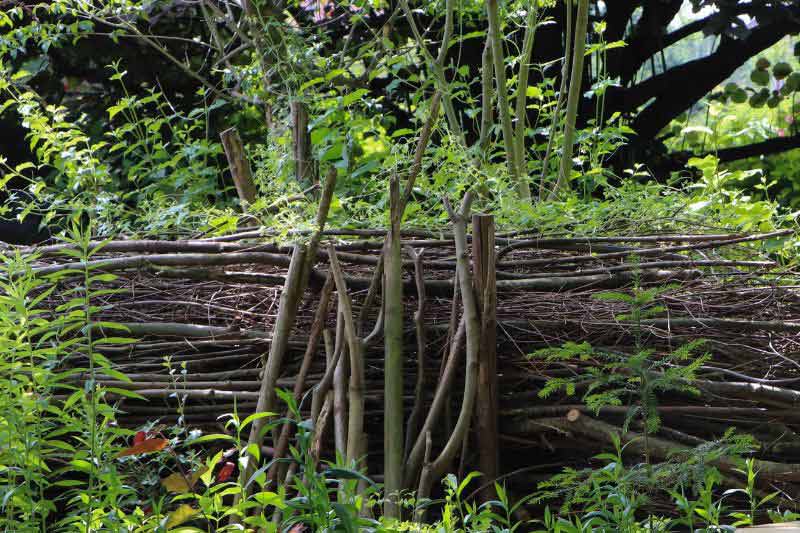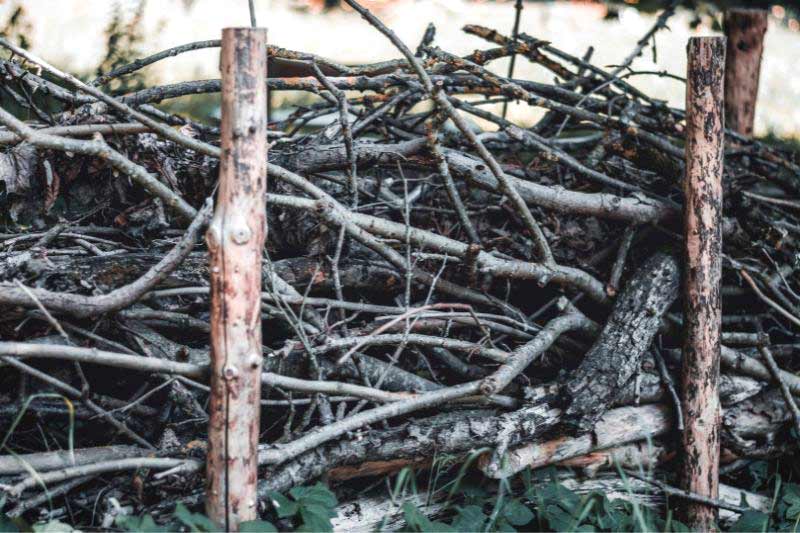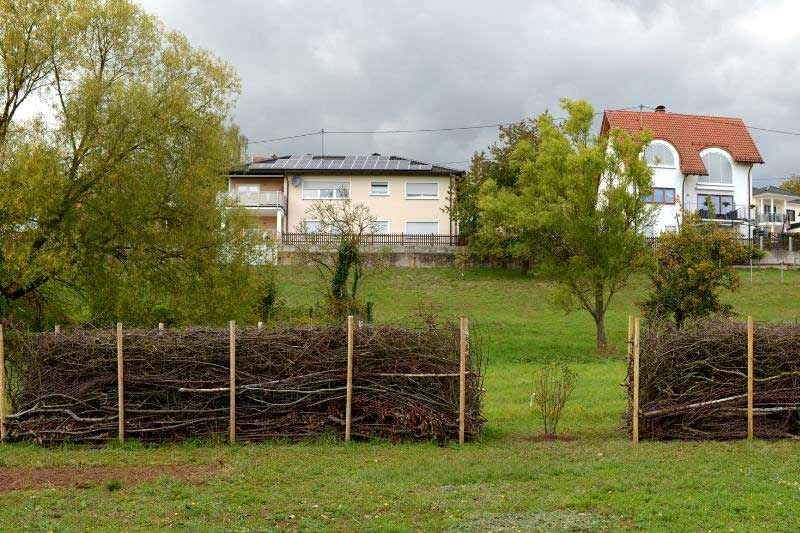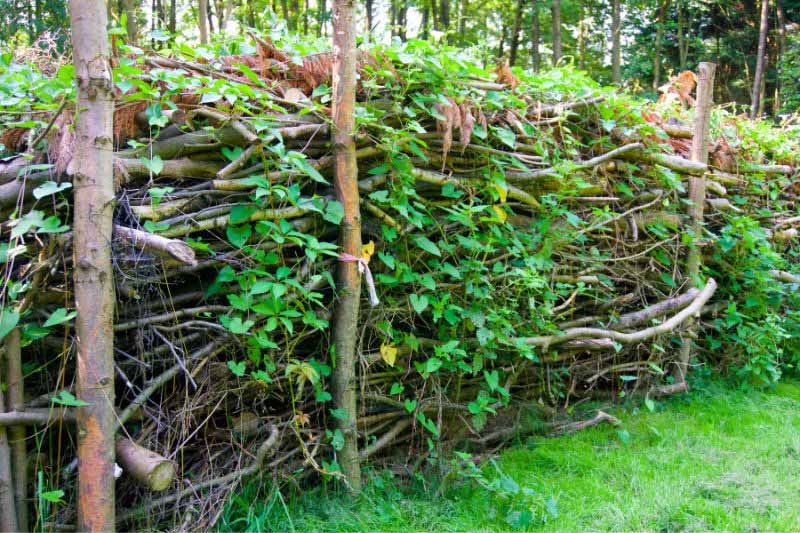An age-old technique used to enclose gardens before wire mesh became common, dead hedges, also called dead hedges or branch hedges are both beautiful, ultra-economical, easy to make and beneficial to biodiversity. Do you have a large garden producing lots of green waste or want to structure a smaller space easily and cheaply? Discover in this tutorial our tips to create a dead hedge that is original and ecological.

What is a dead hedge?
The principle is simple: branches are used to build a fence. This is also called a Benjes hedge, named after German ecologist Herman Benjes who developed the technique in the late 1980s, though such hedges already existed in the Middle Ages and are thought to have been used since prehistoric times and the beginnings of agriculture; they are still widely used today in many poorer countries, notably in Africa, to protect crops.

What are benefits of these branch hedges?
Aside from being economical and attractive, giving garden a natural, bucolic feel, dead hedges serve:
- as physical barrier (to mark out vegetable patch, for example)
- as windbreak, protecting against wind erosion and creating a microclimate suitable for planting vegetables, bushes or trees
- as protection against water erosion from runoff
- as shelter, protection and nesting area for birds, invertebrates, small mammals and insects, which can more easily escape predators there. The shelter they provide is similar to an insect hotel, and they also serve as refuge for hedgehogs and amphibians
- as area for rebuilding humus and as reservoir of organic matter through retained dead leaves, droppings and other excrement; they are true natural composters
- as recycling area and on-site recovery of dead wood, branches and pruning waste without burning or transporting them
Windrows formed by this type of hedge tend over the years to develop spontaneously into living hedgerows made up of local species, thanks to numerous seeds brought by wind, runoff or birds. Young shoots can develop there, protected from herbivorous mammals.
When to install dead hedges?
This kind of work can be done in any season. However, take advantage of pruning periods (fruit trees, ornamental trees and bushes) when you will have many branches available to build your dead hedge. If you want to pleach, that is to weave the branches, do it quickly while they are still flexible, because as they dry they become brittle and harder to braid.
How to make a dead hedge?
A dead hedge consists of stacking branches and roots horizontally to a height of about one metre, between stakes of wood or metal that stabilise the whole:
- Get stakes and a string line to lay out your hedge: sharpen stakes to a point for easier driving in and set one stake perfectly vertical (using a spirit level or by eye) at start of hedge, another at end and stretch line tightly between them.
- Plant two stakes facing each other at regular intervals (about 80 cm to 1.50 m), spaced 20 to 30 centimetres apart. In windy areas, consider wind exposure and drive stakes deep into soil. Spacing along length and width depends on space available in your garden and desired hedge size. Also space stakes according to length of filling branches; if branches are short, place stakes closer together.
- Pile dead branches between stakes along length. If you want a stronger fence, you can interlace or pleach branches on both sides of vertical stakes. You can incorporate leaves and roots in gaps.

Equipment needed:
- Wooden stakes (ideally rot-resistant such as acacia, chestnut or oak, but if you have straight pieces of wood of sufficient diameter in garden you can use those) or metal, minimum height 1.50 m
- A string line
- A sledgehammer or mallet to drive stakes
- A spirit level (optional)
- Branches of various diameters
- Roots
- Dead leaves
How to maintain a dead hedge?
Without new additions of branches, dead hedges naturally turn into living hedges or decompose, compact and evolve into soil enriched in humus. Because they change relatively quickly depending on moisture level, they should be regularly replenished with wood from your pruning work if you want them to remain in place for many seasons. They are therefore good allies for a well-kept garden, preventing green waste from being left lying around.
You can plant at base of your Benjes hedge climbing edible plants (squashes, cucumbers, melons) or ornamental climbers (nasturtiums, sweet peas, clematis...).
































![[plantes type="haie" exposition="soleil" sol="sec" taille="2m" floraison="printemps" feuillage="persistant"] [plantes type="haie" exposition="soleil" sol="sec" taille="2m" floraison="printemps" feuillage="persistant"]](https://en.promessedefleurs.eu/blogwp/wp-content/uploads/2023/01/Comment-creer-une-haie-seche.jpg)
Comments